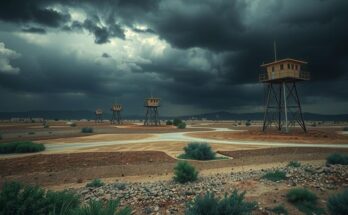Researchers in Japan warn that unreleased stress energy at the Chishima Trench could lead to a magnitude 9 mega-quake. A study predicts a 7-40% chance of a significant quake within 30 years. Movement of oceanic and continental plates suggests strain accumulation, highlighting the necessity for public preparedness.
A research team in Japan has issued a warning regarding unreleased stress energy located at the Chishima Trench, which could potentially lead to a significant earthquake, characterized as a magnitude 9-level mega-quake. This assessment is based on a comprehensive five-year study conducted by researchers from Tohoku and Hokkaido universities, alongside the Japan Agency for Marine-Earth Science and Technology.
Historically, a major earthquake occurred near this undersea trench in the 17th century. According to the government’s earthquake panel, the likelihood of an earthquake with a magnitude of at least 8.8 occurring in the next three decades ranges from 7 to 40 percent. These estimates underscore the pressing nature of the geological tensions present in the region.
In 2019, the research team set up GPS observation stations on the seabed at the critical junction where the oceanic plate submerges beneath the continental plate. The data revealed that the oceanic plate is shifting approximately 8 centimeters annually toward the continental edge. Likewise, a station positioned on the continental plate—the meeting point of the two plates—exhibited a similar 8-centimeter shift in the same direction, signaling significant plate interaction and strain accumulation.
The researchers posit that if the plates have maintained their current configurations since the last notable quake in the 17th century, the resulting strain could equate to the energy release of a major seismic event. Moving forward, the research team intends to expand their studies to additional locations off Hokkaido, enhancing understanding of seismic activity in the region.
In light of these findings, Tomita Fumiaki, an Assistant Professor at Tohoku University International Research Institute of Disaster Science, has expressed concern that the collective memory of the devastating 2011 Great East Japan Earthquake and Tsunami is waning. He advocates for heightened public awareness and preparedness in anticipation of potential future mega-quakes.
This article highlights the concerning findings of a research team regarding the potential for a mega-quake stemming from unreleased stress energy at the Chishima Trench. With historical precedents and significant plate movement indicating a build-up of strain, the probability of a major seismic event occurring within the next few decades is notable. Experts emphasize the importance of public awareness and readiness in light of these potential dangers.
Original Source: www3.nhk.or.jp




